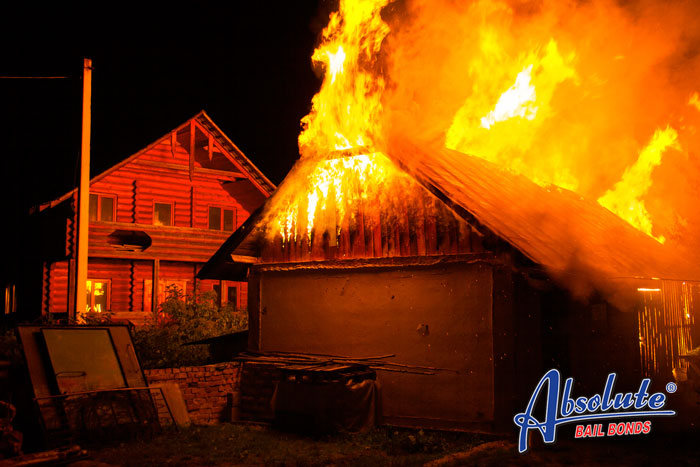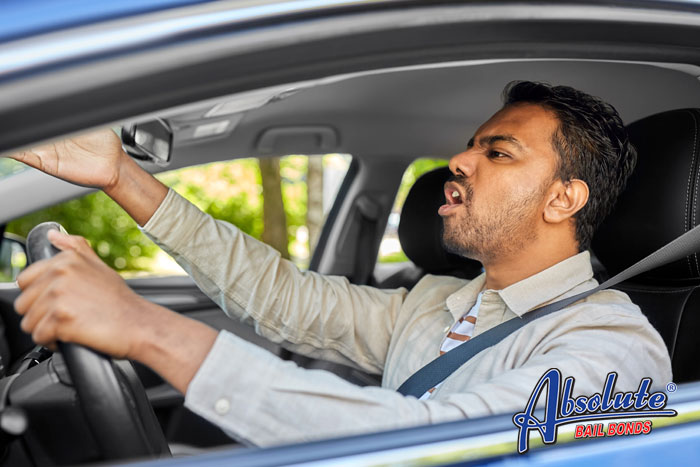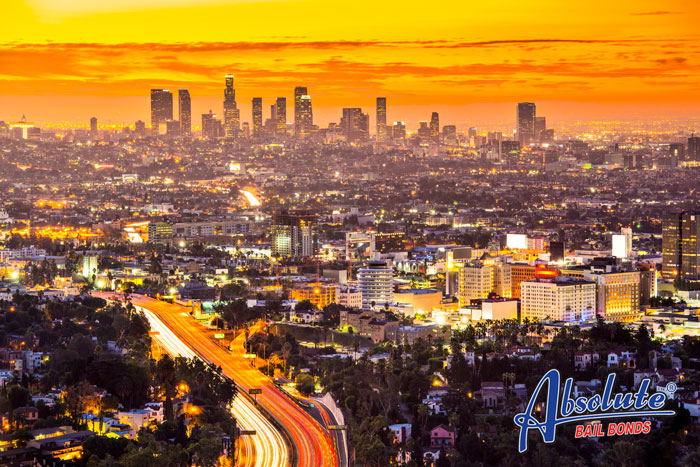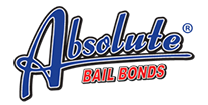
Stay Safe During Wildfire Season
No matter what part of the state you live in, you should know how to take care of yourself if a wildfire is in your area.
Have an evacuation plan in mind. Wildfires move fast and can change suddenly. Don’t wait until you receive evacuation orders to get things in order. As soon as you know that there is even the slightest chance that a wildfire could pass near you, create an evacuation plan. This plan should map out the best way to leave your neighborhood, already having overnight bags stowed in your vehicle, filling up the car’s gas tank, and having everything needed to move pets at the ready.
Rather than calling the fire department every few minutes, listen to reports on the radio/news program as they come in. When there’s a wildfire in your area, you should always pay attention to official reports. These reports will let you know if there’s a chance that wildfire will come closer and even more importantly, let you know if you need to immediately evacuate.
Charge your phones and make sure you have plenty of working batteries on hand. There is a good chance the power will be turned off so you’ll want to be prepared in advance.
Once you have your own situation in order, connect with family, friends, and neighbors and find out how they are doing. An approaching wildfire is one of those times when everyone needs to pull together and lend a helping hand. Make sure everyone has the ability to evacuate and enough supplies to get them through if they have to stay home while the power is out. If they don’t try to help them find what they need. Offering just a little assistance during this time is the best way to make sure everyone survives.
Once everything is taken care of in your community, reach out to relatives and friends who live in another area. The odds are good that they already know about the wildfire and are concerned about your welfare. Touching base, even if it’s only through a social media post will give them some peace of mind.
Stay safe this wildfire season!

Jaywalking in California
All of us have heard the term jaywalking, but few of us can say exactly what it is. According to the Legal Dictionary, the exact definition of jaywalking is the act of crossing a roadway when it is unlawful to do so. This includes crossing between intersections, as well as crossing at a crosswalk equipped with a signal, without waiting for the proper indication that it is safe to do so.
While jaywalking might not seem like a big deal, you should know that it’s prohibited in California. You can learn more about jaywalking in California by checking out 21955 VC, which makes it very clear that jaywalking is illegal in the state.
The law states that you’re not allowed to walk, “between adjacent intersections controlled by traffic control signal devices or by police officers, pedestrians shall not cross the roadway at any place except in a crosswalk.”
Even though jaywalking is illegal, the good news is that it’s an infraction, not a misdemeanor or felony. Not only won’t it go on a permanent criminal record that can negatively impact your ability to find housing or secure a job, but it also means you don’t have to worry about going to jail. The jaywalking incident will be no worse than getting pulled over for a minor driving mistake.
The bad news is that there are some substantial fines connected to jaywalking in California. Right off the bat, your jaywalking ticket will cost you $196 but there will also be administrative fees, processing fees, and other charges added to the ticket until it’s a substantial amount.
It is also worth noting that if you’re caught jaywalking, the police officer who witnessed the incident will ruin your record. If you have any bench warrants, they’ll have no choice but to arrest you.
The big concern everyone has regarding jaywalking is that someone could get hurt. If you’re decision to jaywalk results in an accident, you’ll likely have to defend yourself in a civil case.

Consequences of Reckless Burning in California
Finally, it’s summertime! Between the increased daylight hours and warmer weather, you’re finally able to do all of your favorite outdoor activities, including having your friends over for a bonfire.
Before you strike a match, you need to make sure you’ve taken the proper steps so that you don’t find yourself dealing with a reckless burning charge.
California’s Penal Code 452 PC exists exclusively for people who either start an illegal fire or who are reckless with fire. The law prohibits you from randomly setting fire to:
- Structures
- Property
- Forest land
The way the law is written, even if you don’t deliberately set fire to something, but simply have a campfire, you can still be charged with being reckless with fire if you fail to follow basic protocols and the fire gets out of control.
Penal Code 452 PC states:
“A person is guilty of unlawfully causing a fire when he recklessly sets fire to or burns or causes to be burned, any structure, forest land or property.
(a) Unlawfully causing a fire that causes great bodily injury is a felony punishable by imprisonment in the state prison for two, four, or six years, or by imprisonment in the county jail for not more than one year, or by a fine, or by both such imprisonment and fine.
(b) Unlawfully causing a fire that causes an inhabited structure or inhabited property to burn is a felony punishable by imprisonment in the state prison for two, three, or four years, or by imprisonment in the county jail for not more than one year, or by a fine, or by both such imprisonment and fine.
(c) Unlawfully causing a fire of a structure or forest land is a felony punishable by imprisonment in the state prison for 16 months, two or three years, or by imprisonment in the county jail for not more than six months, or by a fine, or by both such imprisonment and fine.
(d) Unlawfully causing a fire of property is a misdemeanor. For purposes of this paragraph, unlawfully causing a fire of property does not include one burning or causing to be burned his own personal property unless there is injury to another person or to another person’s structure, forest land or property.
(e) In the case of any person convicted of violating this section while confined in a state prison, prison road camp, prison forestry camp, or other prison camp or prison farm, or while confined in a county jail while serving a term of imprisonment for a felony or misdemeanor conviction, any sentence imposed shall be consecutive to the sentence for which the person was then confined.”
If you’re charged with basic reckless burning of personal property, you’re dealing with a misdemeanor crime. The maximum sentence is 6 months in a county jail and/or a $1,000 fine.
The situation goes from bad to worse if a building or forestland was impacted by your fire. When buildings and forest land are involved, reckless burning in California becomes a wobbler offense. At this point, it’s often referred to as reckless arson.
When you create a forest fire and are only charged with a misdemeanor, the maximum sentence you face is six months in a county jail and/or a $1,000 fine. However if the fire involved an inhabited structure or property, you face a felony charge which carries a sentence of 2, 3, or four years in a state prison.
If someone was injured as a result of your fire, the sentence can include up to six years in a state prison.
If you have any intention of lighting any type of fire this year, it’s in your best interest to be safety conscious and to have all of your safety equipment/tools on hand before you start burning.

Early Warning Signs of Heat Stroke
The longer, warmer days inspire all of us to spend more time outdoors. The problem is that the hotter it gets, the greater the risk of heatstroke.
The problem many people discover is that while there are warning signs that they’re starting to overheat, most either ignore these signs or fail to recognize them for what they are until it’s too late. Make this the year that you sit down and familiarize yourself with the early warning signs of heatstroke. You’ll find that knowing when you’re overheating improves your overall health and how much you enjoy the summer months.
Headaches are often the first sign that you’ve been out in the sun and heat too long. They can also be a sign of dehydration so going indoors and drinking a tall glass of cold water as soon as your head starts to throb can solve both issues before they become serious health concerns.
Keeping a mirror tucked into your pocket while you’re outside isn’t a bad idea. You can use it to keep an eye on your complexion. If you notice you’re becoming flushed, you should either get inside or at least to a nice shady patch so you can cool down a bit.
If your skin feels hot, tight, and dry, you immediately need to take steps to cool down. The fact that you feel hot but aren’t sweating isn’t a good sign. The longer you ignore the state of your skin, the greater the risk of you developing full-blown heat stroke.
Do you feel your pulse pounding in your throat or your heart hammering in your chest? This is often a sign that you’ve developed heatstroke. You need to immediately get out of the sun and start slowly cooling yourself down. If your heart rate doesn’t start to slow down after a few minutes, you’ll want to seek medical assistance.
The hotter you get, the more confused you’ll feel. Things like agitation, sudden irritation, delirium, and slurred speech are signs of advancing heat stroke. Seek medical attention.
Stay cool and healthy this summer!

Avoiding Road Rage in California
Road rage is a serious problem and it doesn’t show signs of getting better. According to the American Automobile Association, approximately 200 murders and 12,000 deaths over seven years were linked to road rage incidents. The NHTSA reported that 66% of traffic fatalities were the direct result of aggressive driving and road rage. The Zebra conducted a study in 2019 that revealed that 82% of drivers committed an act of road rage.
While you may not be able to avoid road rage altogether, there are some things you can do to reduce the number of road rage incidents you’re linked to.
Avoid driving when you’re already on edge.
The more irritated you are when you slide behind the wheel, the greater the odds are that you’ll experience road rage during your commute. Try to calm yourself down before driving. Once you’re on the road, take deep breaths and listen to soothing music or an uplifting podcast.
Give yourself plenty of time to reach your destination. The tighter you are on time, the more recklessly you’ll drive and the more irritated you’ll be at other drivers. Giving yourself a good amount of time to safely reach your destination is one of the best ways to avoid road rage incidents.
Carefully choose your route before you leave. If you know you’re already irritated, choose a route that has the least amount of traffic on it. The fewer cars you encounter on your drive, the more relaxed you’ll be.
Let things go while you’re driving. There will be days when things happen that irritate you. Rather than letting them get under your skin and prompt you into doing something you’ll regret. Take lots of deep breaths, practice defensive driving techniques, and focus on all the good things that are happening around you.
When you encounter an angry driver, don’t engage with them. Stay defensive and let them go ahead of you. Don’t match their aggressive behavior with aggressive moves of your own.

Providing False Credit Card Information
There are times when we could all use a little extra money. Adding an additional line of credit to our lives seems like a good way to get it. The problem is that if you’re already overstretched, the credit card companies will likely reject your application. This can prompt some of us to consider providing false credit card information.
Before you start to provide someone with false credit card information you should know about Penal Code 484f PC. This is the law that outlines the consequences of providing false credit card information in California.
The law states: “(a) Every person who, with the intent to defraud, designs, makes, alters, or embosses a counterfeit access card or utters or otherwise attempts to use a counterfeit access card is guilty of forgery.
(b) A person other than the cardholder or a person authorized by him or her who, with the intent to defraud, signs the name of another or of a fictitious person to an access card, sales slip, sales draft, or instrument for the payment of money which evidences an access card transaction, is guilty of forgery.”
If you think providing false credit card information is something that only happens when people lie on credit card applications, you’re wrong. While there are lots of people who do lie when they apply for credit cards, there are many different ways a person can violate the law.
Examples of providing false credit card information include:
- Creating fake debit/credit cards
- Using a friend/family member’s credit card without first getting their permission
- Providing a store with a fake credit card number
- Doing something to alter the numbers on a credit/debit card
Providing false credit card information is a wobbler offense. The circumstances surrounding the incident and the amount of money involved are used to determine if you’ll be charged with a misdemeanor or a felony. If you’re convicted of misdemeanor falsifying credit card information, the maximum sentence is one year in jail and restitution. In felony cases, the maximum sentence is three years in prison.
In most cases, providing false credit card information is just one of the charges you’ll have hanging over your head. Additional charges usually connected to this type of crime usually include forgery, petty theft, stealing a credit card, etc.

Is Public Intoxication a Misdemeanor in California?
Everyone knows that we’re not supposed to drink and drive. Many of us have gotten really good about making sure that whenever we go out to have a good time, we have a plan for getting home that doesn’t involve us driving. In some situations, we simply decide to walk home.
While walking home while you’re drunk is preferable to you driving while under the influence in California, you should be aware that it’s still not the safest option. All of the alcohol you’ve consumed slows your response time and dulls your reflexes. Not only does this make you an attractive target to any criminals you may encounter on your walk, but there’s also a chance a patrol officer could notice you staggering home and decide to charge you with public intoxication.
That’s right. Being extremely drunk while in public is a crime.
California even has a law that specifically deals with public intoxication. It’s Penal Code 647f PC. It clearly states that anyone:
“Who is found in any public place under the influence of intoxicating liquor, any drug, controlled substance, toluene, or any combination of any intoxicating liquor, drug, controlled substance, or toluene, in a condition that they are unable to exercise care for their own safety or the safety of others, or by reason of being under the influence of intoxicating liquor, any drug, controlled substance, toluene, or any combination of any intoxicating liquor, drug, or toluene, interferes with or obstructs or prevents the free use of any street, sidewalk, or other public way.
(g) If a person has violated subdivision (f), a peace officer, if reasonably able to do so, shall place the person, or cause the person to be placed, in civil protective custody. The person shall be taken to a facility, designated pursuant to Section 5170 of the Welfare and Institutions Code, for the 72-hour treatment and evaluation of inebriates. A peace officer may place a person in civil protective custody with that kind and degree of force authorized to effect an arrest for a misdemeanor without a warrant. A person who has been placed in civil protective custody shall not thereafter be subject to any criminal prosecution or juvenile court proceeding based on the facts giving rise to this placement. This subdivision does not apply to the following persons:
(1) A person who is under the influence of any drug, or under the combined influence of intoxicating liquor and any drug.”
Public intoxication in California is a misdemeanor. If you’re convicted, the maximum sentence is:
- Six months in a county jail
- A $1,000 fine
A public intoxication conviction may be embarrassing but it’s not an offense that will negatively impact your gun rights. It’s also possible to have the public intoxication charge expunged.

What Happens if You Ignore a Subpoena in California?
One of the mistakes some people make when they witness a crime is assuming that since they weren’t actively involved in the crime, they don’t have to be involved in the investigation or trial. This attitude causes some people to ignore a court subpoena. If you’ve been issued a subpoena, you should know that ignoring it is a mistake that will likely result in you getting into legal hot water.
Subpoenas are a very important part of the state’s justice system. To make sure people like you don’t ignore a subpoena, laws have been passed that make ignoring a subpoena punishable. If you’re convicted, you could spend some time in jail.
Many subpoenas are issued because you are a witness and the case depends on your testimony. If you fail to make your court date, the judge will request a Proof of Service document. If this is requested, the next step is issuing a body attachment which is more commonly referred to as a bench warrant. If you’re pulled over for a routine traffic stop, have to call the police for some reason, or the police simply knock on your door, you’ll be arrested immediately.
One of the interesting things about charges related to ignoring a subpoena is that this is one of the Bail Warrant crimes. This is a big deal because it means that once you’re arrested, you aren’t going to be released from jail until your case involving not obeying a subpoena case has been concluded.
Considering how long you could be potentially sitting in a jail cell for ignoring a subpoena, it makes more sense to rearrange your day and simply appear in court rather than pretending you never saw the subpoena.

Most Dangerous Cities in California 2022
Like most parts of the world, California has some places that are great areas to raise a family. These areas have good schools, solid sources of income, and a low crime rate. The flip side of the coin is that there are also some extremely sketchy parts of California. A quick look at these crime rates makes it easy to see which are the most dangerous cities in California in 2022.
Oakland, California
Oakland hasn’t had a good reputation in years. The bad reputation is a direct result of the city’s insanely high crime rate, which is 150% higher than the national average. While the city has more than its share of petty crimes, violent crimes are the real concern. Not only does the city have the fifth highest property crime rate in California, based on the numbers, but there’s also a murder every five days.
Emeryville, California
Emeryville and Oakland tend to go back and forth between which one is California’s most dangerous city. Right now they are basically running neck and neck. Emery is home to only 12,000 people, all of whom are aware of how dangerous their zip code is. The interesting thing about Emeryville is that while 1 out of 8 people has recently been the victim of a property crime, the city’s violent crime, and gang-related crime isn’t as high as some other California cities. In Emeryville, there is only a 1 in 72 percent chance of you getting caught in a violent crime. The fact that the violent crime rate is low, indicates that many of Emeryville’s crimes are economically driven.
Commerce, California
While Commerce still earns a spot on the most dangerous cities in California in 2022 list, there’s no denying that as the years have passed, Commerce’s violent crime rate has been steadily decreasing. While it’s getting better, there is still a high rate of property crime, with 1 in 11 residents reporting that they were the victim of a property crime. Commerce isn’t a stranger to violent crime either, during 2020, Commerce was ranked #11 on California’s list of cities with the most reported violent crimes.
Crescent City, California
It’s the same that Crescent City has such a high crime rate because this is a pretty city that provides residents with an excellent climate, easy access to Oregon, plenty of outdoor activities, and close proximity to the Pacific Ocean.
The problem is the crime rate. It’s so bad that Crescent City has landed near the top of the list of California’s most dangerous cities in 2022. What’s truly alarming is that the city has an extremely high sex crime rate. There have already been 10 sexual assaults reported this year as well as 77 additional violent crimes.
What do you consider an acceptable crime rate when you’re weighing the pros and cons of moving to a new California city?

Graduation Parties and Underage Drinking
Finally! It’s graduation season. For many students and parents, this is a day they’ve been waiting for their entire lives. They’re finally putting high school behind themselves once and for all and allowing themselves to focus on the future.
If you’re a graduating senior or someone who just likes to hang out with a group of senior friends, remember that while you’re allowed to have a good time and enjoy life, you aren’t legally allowed to consume alcohol in California. The fact that you’ve graduated from high school doesn’t matter. In California, you’re not allowed to drink until you turn 21. Getting caught consuming alcohol at a graduation party prior to your 21st birthday can have an immediate negative impact on your future.
One of the first things you need to realize is that you don’t have to be caught actually drinking in order to get into trouble for consuming alcohol when you’re still underage. If you’re surrounded by beer bottles, have a drink in your hand, or simply drank a little bit, you’re still going to be in trouble with the law. California has a zero-tolerance policy when it comes to minors and drinking.
The consequences of getting caught drinking at a graduation party while you’re a minor are both scary and expensive. In most cases, the judges will order you to pay fines and do substantial community service. In some situations, especially if this isn’t the first time you’ve been caught drinking while still a minor, the judge will decide that you should spend some time in jail.
You’re bad decision to drink at a friend’s graduation party even though you were a minor will likely result in you losing your driving privileges for a time. It doesn’t matter that you were smart enough to avoid driving after you were drinking. If you’re caught buying alcohol, using a fake ID to get alcohol, or being in possession of alcohol, your driver’s license will likely be suspended. Not only does this mean you have to beg for a ride whenever you want to hang out with friends, but it also makes getting a summer job more difficult. When you are finally able to drive again, you’ll likely have to pay a significantly higher insurance premium.
An increasing number of colleges are starting to crack down on minors who get caught with alcohol. There have even been reports of scholarships being withdrawn and application approvals getting rescinded.
Considering the long-term impact a single drink can have on your future, it’s in your best interest to avoid alcohol this year while you’re celebrating graduations.

